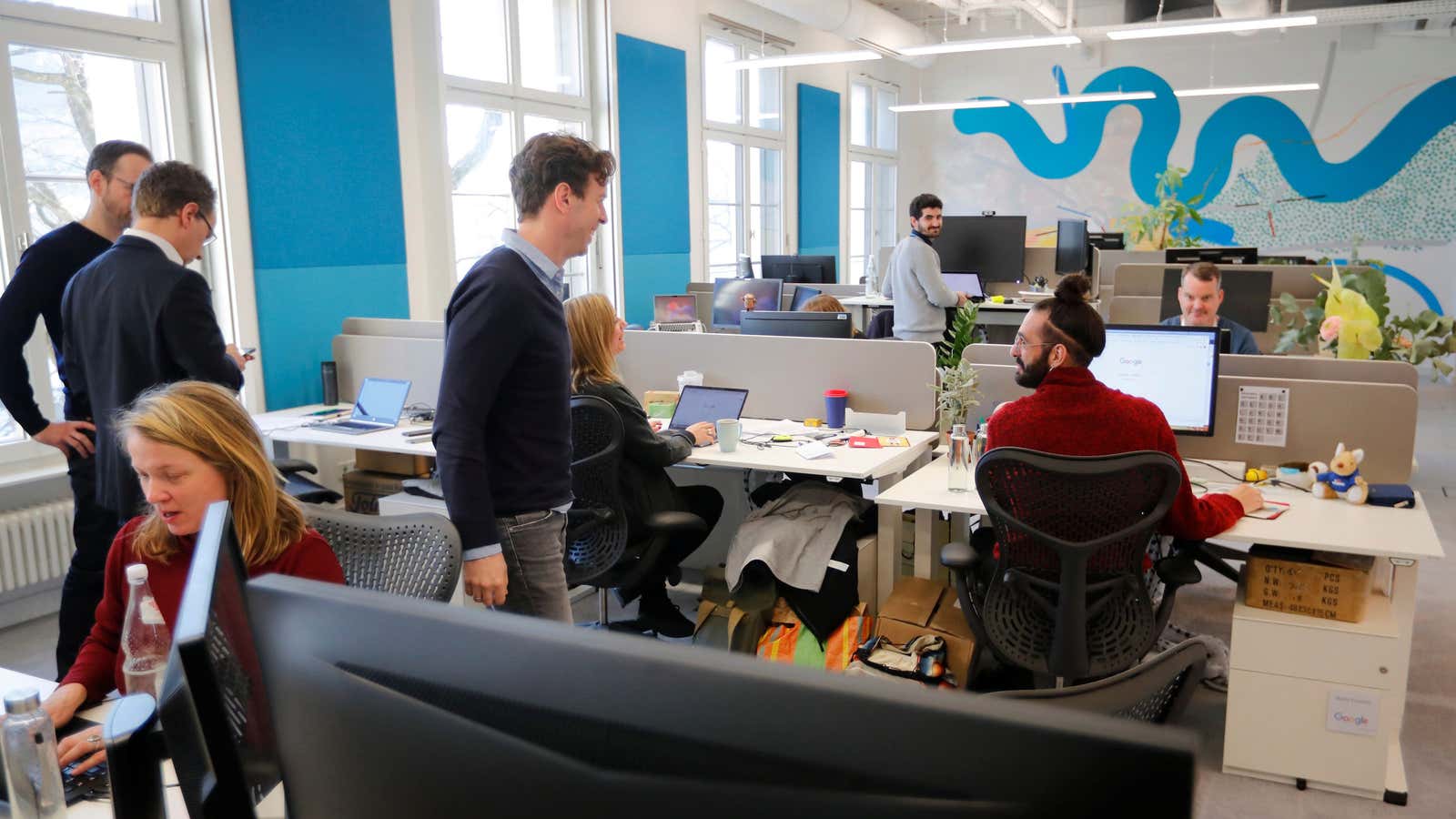It would be nice if, to address racism and sexism, we could simply call on people to change their subconscious prejudicial impulses. Unfortunately, despite the hype around “implicit bias” as a psychological tool for improving workplace diversity, it doesn’t work that way. As Quartz has previously reported, there are numerous methodological flaws with the most commonly used implicit-bias test, and relying on current techniques meant to address implicit bias doesn’t product strong long-term results. But that doesn’t mean we should give up on addressing bias altogether, argued Neil Lewis, professor of communication and social behavior at Cornell University, at this year’s Society for Personality and Social Psychology conference.
Lewis said that when he first saw evidence showing that implicit-bias training doesn’t create long-lasting effects, he found it depressing. He originally planned to research implicit bias in graduate school, then changed his mind when he realized the effects of trainings based on the concept don’t last long, he says. “But over time I’ve come to view it as an important and useful reminder of a broader lesson from the behavioral sciences: people are highly influenced by their environment,” he wrote in the notes for his talk, which he emailed to Quartz. “The reasons they have those biases in the first place is because they’ve learned them from the contexts they’ve been embedded in—contexts that are rich with social scripts (norms) that influence our thoughts, feelings, and behavior.”
Many companies enroll employees in one afternoon of implicit bias training, but a few hours’ work won’t magically create more egalitarian people, and any attempts to address prejudice will take sustained time and effort. In his talk, Lewis highlighted two alternative methods which, depending on the nuances of a particular situation, can combat biases: calling on influential individuals or institutions to change norms, and addressing structural issues within an organization.
Research shows that people change their behavior in line with social norms. Even if someone disagrees with the new norm, they are likely to go along with it if influential people or institutions set a new standard of how to behave. Lewis says this research could be used to inform workplaces: He says he’s inspired by which shows “that influential actors in networks have a lot of influence on the norms of those networks.” Science backs up the intuition that certain people are especially effective at creating change: “If influential individuals speak up and express egalitarian, anti-prejudice views, it’s possible for their voice to begin shifting norms within their organizations,” adds Lewis.
And, relatedly, rather than addressing bias by attempting to change the unconscious, Lewis suggests focusing on policies and social structures. He points to research showing that when all students are screened for whether they should enter gifted education programs, a far higher number of racial minorities and low-income students enter these programs, compared to when students have to be referred for the screening by their teacher. Though research has shown that teachers are biased against children of color (on average evaluating them as “less intellectual” than their white peers), psychologists have not managed to create a program that changes this outcomes by focusing on implicit bias.
Rather than trying to change implicit bias, Lewis suggests thinking about how bias might manifest, and developing policies to eliminate the impact of such biases. Such an approach can also apply to workplaces. The specific policy that will improve workplace diversity will always depend on the specifics of a particular organization. “This is actually part of my problem with implicit-bias training being the go-to tool for all diversity problems,” writes Lewis. “If the problem with a company’s workforce is at the hiring phase, that requires a different set of solutions than if the problem is at the retention phase, for example. We have to spend time figuring out the mechanisms underlying the problems, and the mechanisms that would be effective for addressing them.”
These methods of addressing prejudice are not simple or neat, and they cannot be universally applied to every situation. But that’s part of Lewis’s point: We can’t rely on a single test or policy to end prejudice. Racism and sexism are, unfortunately, deeply embedded in society, and it takes work to figure out the many ways they manifest manifest and how to combat these prejudices. Implicit bias can indeed contribute to discrimination, but it’s just one factor. And, while it’s valuable to research implicit bias to try and understand how prejudice works, Lewis says it isn’t the most effective method at creating interventions. “If we focus too much effort on implicit bias, we can miss other important factors that contribute to disparate outcomes, and fail to intervene on those dimensions,” he writes. The unconscious may be part of the picture in shifting biases, but it’s never going to hold all the answers.
